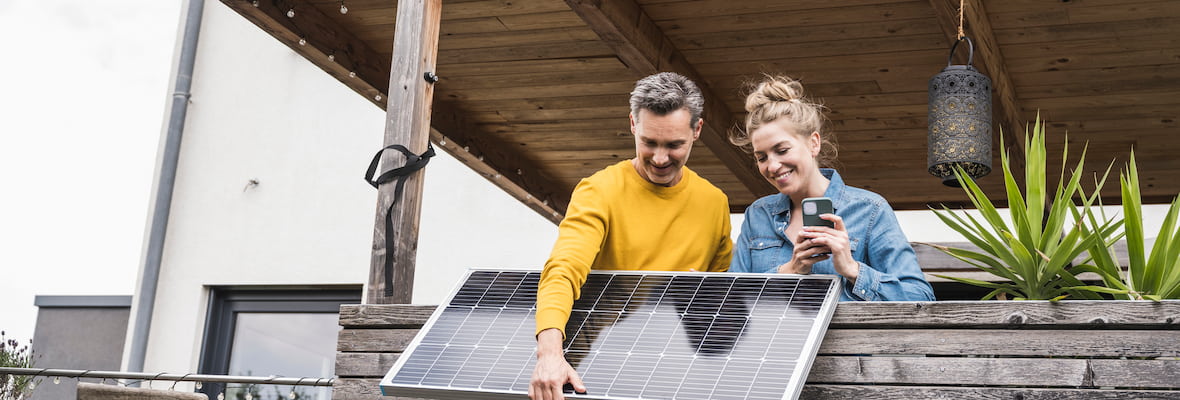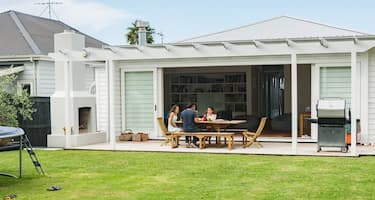Solar panels have become a growing renewable energy source in Australia, but have you ever wondered how they work?
Australians have the highest uptake of solar panels globally. A growing number of people are choosing to invest in solar panel systems to save money on electricity bills and use renewable energy to protect our environment. [1]
Let's have a look at how this renewable energy source works.
Solar Energy
Solar energy works when an electric current is captured from the sun and converted into electricity. Solar energy works to power your home and any extra electricity that you don't use can be stored in a battery or put back into the electricity grid.
Solar Panel Cells
Solar panels are made up of many photovoltaic (PV) cells (also known as semiconductors) which link together. The term photovoltaic comes from two root words 'photo' and 'volt,' referring to light and voltage. When these solar cells are exposed to sunlight, they generate an electric current.
Here's how PV cells work in three simple steps: [2]
When photons in sunlight hit the solar cells, they knock electrons loose.
Loose electrons flow, creating an electrical current.
The electrical current is captured and transferred to wires.
Once this flow of electricity reaches a solar inverter, it can be transformed into usable power for your home and appliances.
Solar Panels

In Australia, around 30% of households have rooftop solar panels installed. Solar PV systems generated approximately 10 per cent of Australia’s electricity in 2020-21. [3]
For Australian homes, the position of your solar panels is vital. In many cases, north-facing is ideal, however east or west-facing can also work well. Depending on when you consume the most energy in the day, it pays to be strategic about the panel placement.
For example, if your demand for energy is highest in the morning, then north-facing panels will likely work best as the majority of sunlight will be captured early in the day.
Solar Grid
Also known as a network, the electricity or solar grid transports solar power between generators and into the homes and businesses of everyday Aussies.
The grid is a great way to sustain solar energy on cloudy or rainy days. Excess electricity is exported to the utility grid and imported to your home appliances so you can stay connected even when it’s not sunny outside.
Being connected to the solar grid can also help you save money on your energy bills. If your solar panels capture more electricity than you use, you can export that electricity back into the grid and receive a credit on your electricity bill. This is called a feed-in tariff.
Solar Batteries

Solar batteries store excess solar energy generated from your solar panels.
A battery storage system serves as a backup energy source for when your solar panels don't generate enough electricity at night, on cloudy days or during power outages.
It's recommended you assess your home's energy needs before buying solar batteries to avoid buying too little or too many batteries for your level of energy consumption.
Solar Hot Water

Solar hot water systems capture thermal energy from the sun to heat water for your home.
This solar system includes collectors (panels), a storage tank, a heat exchanger, a controller system, and a backup heater.
Solar thermal panels (also known as collectors) are usually installed on the roof of a house and turn sunlight into heat.
How Solar Panels Work Step by Step
-
Sunlight activates the solar cells
-
Each solar cell produces a direct electrical current (DC electricity)
-
The solar inverter converts DC electricity into usable AC electricity (alternating current) for your home appliances
-
Your home is powered using AC electricity from the solar PV (photovoltaic) modules
-
A net metre measures your usage (including electricity production and consumption)
-
Any additional electricity is exported back into the electricity grid which allows your home to stay powered, even when sunshine is in shorter supply
Choosing the Right Solar For You
In the solar industry, there are three main types of solar panels, monocrystalline, polycrystalline and thin-film panels. [4]
Monocrystalline Panels
These panels offer a high efficiency rate and solar panel capacity (power output). In terms of cost they are the most expensive but they're ideal for situations where space is limited and you want to maximise energy.
Polycrystalline Panels
These panels also offer a high efficiency rate at a lower cost than monocrystalline panels. These panels may be a better option for solar power in residential areas where there is more roof space to accommodate them.
Thin-Film Panels
Thin-film panels are a different technology compared to the other types of panels. They have a lower efficiency rate, meaning you’ll need more thin-film panels and roof space to produce the same amount of power as other panel types.
Installing Solar Panels

In Australia, solar panels can only be installed by a licensed rooftop solar installer who is accredited by Solar Accreditation Australia (SAA). Accredited installers must also hold an unrestricted medical licence in the state the solar panels are being installed.
Once it’s installed, you can find out how to use your solar system and get the most out of your solar system over time.
Protecting Your Solar Panels with Home Insurance
If you've ever wondered if solar panels are covered by home insurance - we're here to tell you that they are.
Budget Direct's Home and Contents Insurance covers loss or damage to energy storage systems and solar panels.







